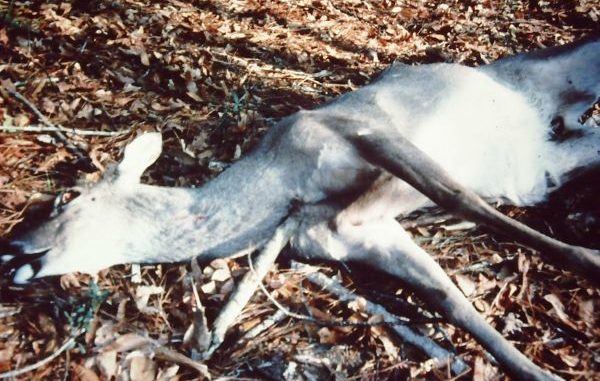
It is a given that deer are going to die annually on your property due to factors other than legal deer hunting.
Disease, vehicle collisions, starvation from adverse weather conditions, illegal hunting and predation will remove deer from your population every year.
Habitat conditions are very important factors to consider when trying to determine the extent that natural mortality will have on your herd: If your habitat is poor, resulting in the physical condition of the deer being poor, the impact of the mortality could be high.
Hurricane Isaac hit the state at the time when the does in Area 6 were fawning ,and the estimated loss of fawns was high, perhaps as high as 90 percent. There was some mortality of adult deer, probably due to the impact of the storm on the habitat that resulted in a loss of forage for the deer; deer become stressed from flooding, and without adequate sources of food deer will die.
It is interesting to note that in Texas, droughts are a major problem for deer herds, and in Louisiana flooding is a major concern. Studies have found as much as 52 percent mortality in some Texas herds because of drought and shortages of food.
Deer fair better during adverse weather when habitat conditions are good and the deer herd is in balance with that habitat.
Whenever a hunter finds a dead deer in the woods or one that is almost to the point of death, it is just about impossible to determine the exact problem. Contamination of important tissues from bacteria generally make it impossible to test the tissue and, with deer that are still alive, the secondary infections that begin to occur from stress can disguise the real problem.
That said, hunters finding sick deer in the woods should report these to LDWF and try to assist with obtaining blood and tissue samples.
While legal hunting is the main cause of mortality in a deer herd, natural mortality might remove an additional 10 to 25 percent. Natural mortality appears to be higher in deer herds with a good population of adult bucks due to the rut-related stress.
Harvest programs that remove the desired bucks and the low-end bucks while allowing younger above-average bucks to move up to the next age class might help reduce this mortality created by the stress of the rut.
Lightning strikes also can be a source of mortality to deer. While I was deer study leader with LDWF, I investigated deer mortality that was caused by lightning on two different occasions. One strike killed an adult doe that was pregnant with twins and its yearling doe.
No doubt the strangest case of natural mortality was a deer LDWF turkey biologist Jimmy Stafford found on Bens Creek WMA one year: The deer had been impaled in the chest with a stick.
Apparently the deer was running through a recent cut-over tract and somehow ran into the stick that must have been sticking up out of the ground.
I once found a fawn that had a leg hung up in a barbed-wire fence. Other than a leg that was about to rot off, the fawn was in good shape. Apparently the doe had been coming to and feeding around it on a regular basis.
It is a tough world the white-tailed deer lives in. But whatever we can do to improve the habitat conditions for deer can offset some of the mortality that will occur.


